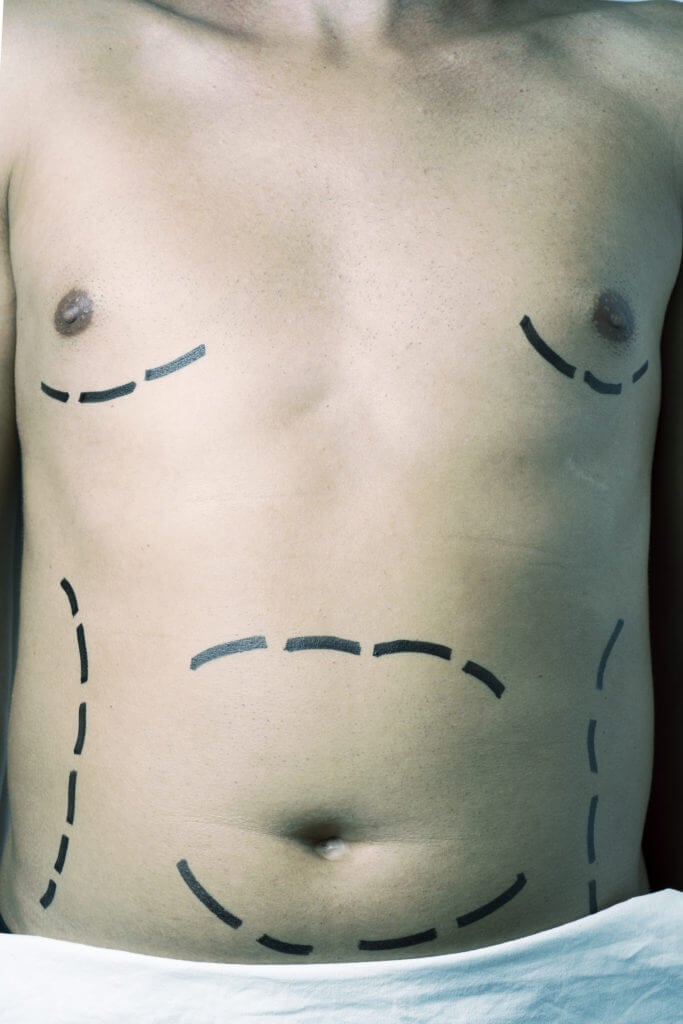Gynecomastia is a condition many men assume they’ll have to either live with forever. Characterized by a hormone imbalance that causes the breast tissue to overdevelop, this condition can prove quite stubborn even in the face of constant chess exercise.
If you have pseudogynecomastia, meaning that your puffy torso comes from excess weight or fat deposits in your chest, a healthy diet and exercise can help. Sometimes, however, these pockets of fat are going to remain no matter how much you try.
This syndrome, known as true gynecomastia, is not really related to your weight in any way. Gynecomastia occurs due to hormonal shifts in the body responsible for the enlargement of one or both breasts.
No need to worry, though, as neither gynecomastia or pseudogynecomastia are severe or life-concerning conditions. If you’re a man looking for a quick, lasting solution for those puffy pecs, a skilled cosmetic surgeon can help restore confidence in your body with ease.

What is Gynecomastia, and What Causes It?
Gynecomastia is the medical term for enlarged breasts in men. It can occur in men of all ages and stems from an imbalance between your testosterone and estrogen levels.
Testosterone is the hormone responsible for male traits such as muscle mass and body hair, while estrogen controls female traits such a breast growth.
Men naturally produce small quantities of estrogen. When a male body produces an overabundance or lack of testosterone, however, gynecomastia may develop due to this unbalanced hormone ratio.
This hormone imbalance can stem from natural changes such as puberty or aging, medication aftereffects, excessive alcohol intake, or hyperthyroidism.
What Causes False Gynecomastia?
Pseudogynecomastia is a result of excess fatty deposits in your breasts, which can make them look like female breasts. Note that these deposits can be very stubborn, defying results even in the face of the most vigorous exercise and diet routines.
Even men at their ideal weight can develop gynecomastia. Saggy or stretched skin that comes from significant weight loss or aging can make your pseudogynecomastia more evident.
What Treatment is Best for Gynecomastia?
Gynecomastia can be treated effectively with liposuction, which is done by making small incisions located at either side of your chest near the armpit. The surgeon then inserts a small tube-shaped device that breaks down and then sucks out the excess fat and glandular tissue.
After the incisions and fat removal are complete, your breasts are then sculpted to give you your body shape a natural look and feel.
Recovery time after liposuction to treat gynecomastia is relatively quick. However, you will have to grow accustomed to wearing a compression garment for a few weeks to reduce swelling and stabilize the treatment site.
Exercise is a no-no for about three weeks, but don’t worry; after a few days, you can return back to your daily work and routine.
More Severe Cases
For more severe cases of gynecomastia, liposuction isn’t the best option. We recommend that you consult with your physician to determine which treatment is best for you, depending on your situation.
Often, severe cases of gynecomastia are treated with surgical a mastectomy, which involves the surgical excision of glandular breast tissue. The incision sites are carefully picked to reduce visible scarring. The surgeon may also reposition your nipples to give your chest the most natural appearance, if necessary.

